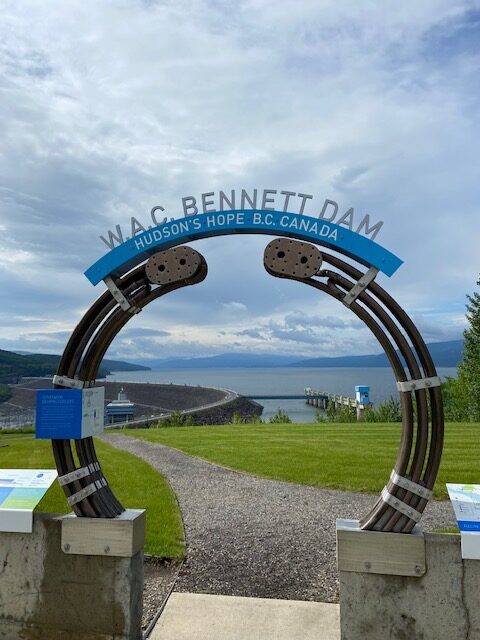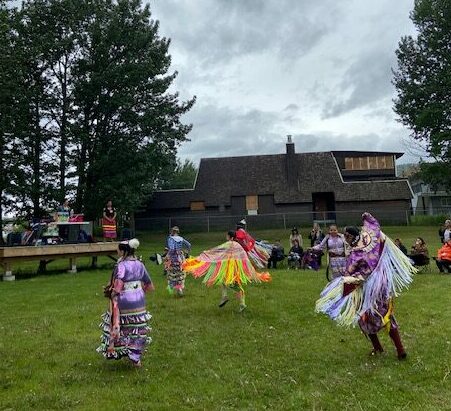Gwillim Lake, British Columbia, Canada
I am grateful that I was able to do a rural CFE placement with School District 59, which includes Dawson Creek and the surrounding area. Not only did I meet many wonderful people and get to explore a part of BC I had never been to before, but I also learned a lot about local Indigenous knowledge and land-based learning.
My CFE coincided with National Indigenous Peoples Day, so I was able to celebrate this special day with the students and educators of SD59. One of the first things I learned upon arrival in Dawson Creek is that the city is on Treaty land – this is quite rare in BC. Most of our province is on unceded territory instead. I have to admit that I was ignorant about Treaty 8 before visiting this area, so it was important to me that I learned more about Treaty 8 and the numerous local Indigenous peoples that were a part of this treaty. It was especially meaningful to spend National Indigenous Peoples Day in an elementary school in SD59, as there was a district-wide celebration of all of the local Indigenous cultures. We started off the day with a zoom meeting that everyone joined, and different classes and schools across the district took turns sharing art, stories, music, and dance to celebrate the day and the land that we were all living and learning on. The classroom I was with then was invited to spend time at the school’s outdoor classroom with a local Indigenous elder. She shared some of her beautiful traditional art with us, explaining how she created moccasins and jewelry. She also shared information about local flora and fauna… she even brought in a wolf, lynx, and bunny pelt for students to observe and touch! She concluded her visit by making a big batch of bannock dough (with help from the class) and then each student cooked up a bannock snack over the fire. It was a beautiful way to celebrate the day, and I was impressed with the engagement and knowledge of the students.
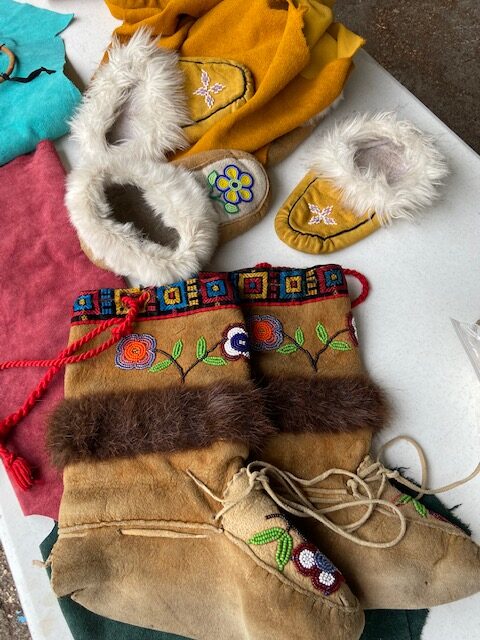 Traditional moccasins
Traditional moccasins
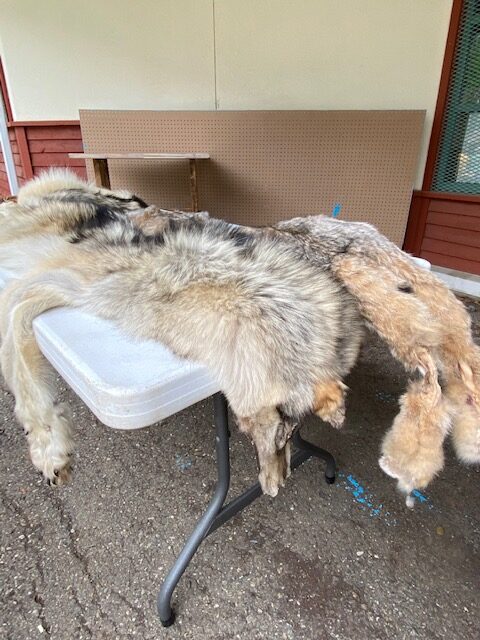 Local wolf pelt
Local wolf pelt
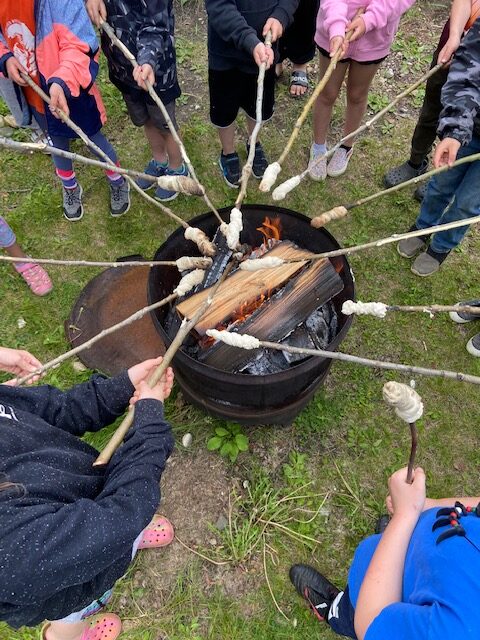 Cooking bannock
Cooking bannock
Another very special experience was spending time with a local Indigenous knowledge-keeper at SD59’s outdoor learning site at Gwillim Lake. It is an amazing outdoor facility that all students in the district can enjoy – classes can visit for the day or overnight, and can spend their time there canoeing, hiking, or rock climbing. However, it was even more special to explore this beautiful area with a local knowledge-keeper, Bruce McKay. A group of high school students came for the day, and after a welcome sharing circle, Bruce shared some personal stories and wisdom that he had gained over the years, using the framework of the medicine wheel. As a group, we walked through some of the forest trails, observing and appreciating the land from different perspectives, while also learning more about powerful local plant medicine (and even picking some for future use!).
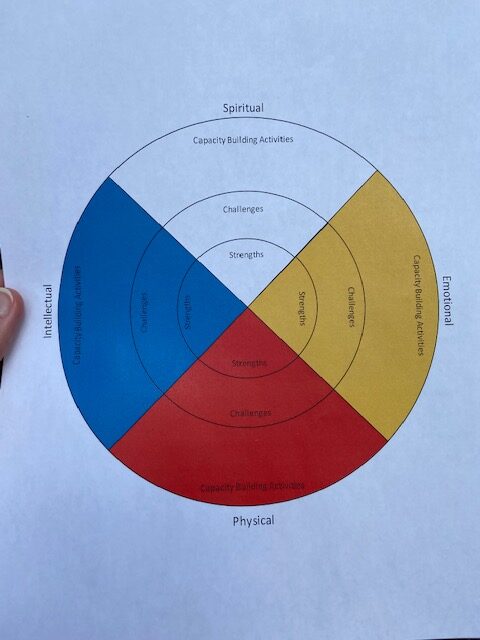 Medicine wheel framework
Medicine wheel framework
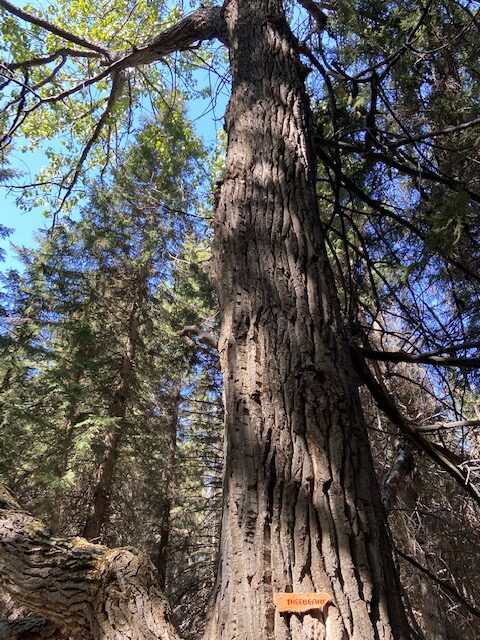 New perspectives
New perspectives
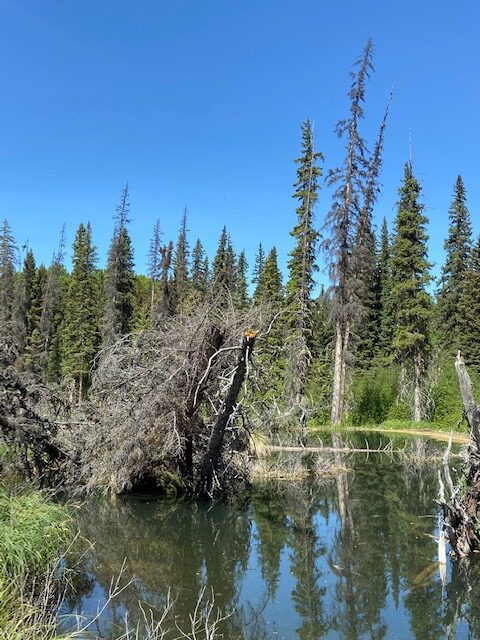 Beaver home
Beaver home
I learned so much about the land SD59 is on, mostly from conversations with these local Indigenous knowledge-keepers and elders. I was really impressed with the knowledge of local students, and also with how integrated the local Indigenous groups seemed to be in each school community we visited. I think I had a lot of pre-conceived ideas about local ideologies about land and culture in the area that I had not even realized, especially as it is seen as ‘oil and gas country,’ and is the site of places like the W.A.C Bennett Dam (with its dark history). However, I was completely wrong on many fronts, and I am so grateful that the local community were so welcoming and friendly, and helped me learn so much about this part of our province, and about the peoples that have lived on this land for generations. My experience in SD59 was truly a journey of inquiry about the power and importance of land-based learning.
M.E.
